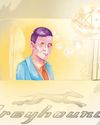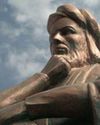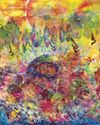
Have a good look”, the magician says: “Can you confirm that this is a perfectly ordinary hat?” For you, this is no fun at all. You awkwardly turn it over a few times and self-consciously agree that it seems fine. Something is bound to be amiss – but what? You have no idea what sort of abnormality to guard against. In this setting, it is unclear what counts as an ‘ordinary’ hat, so you might object that it is senseless to confirm that it is one. ‘Ordinary’ has its meaning fixed by relevant contrasts; there is no single property which the word denotes in all settings.
Back in 1962, in Sense and Sensibilia, J. L. Austin complained that philosophers often put us in a similar predicament. They might draw our attention to a table and ask: Is this real, or is it an illusion, a ‘flicker on the cave wall’? Or they might get more personal, asking whether your life is authentic: Is this the real you?
As with the magician, these questions can leave us baffled and perhaps a little embarrassed. According to Austin, this is because the philosopher’s questions about reality are analogous to the magician’s question: like ‘ordinary’, ‘real’ only makes sense if the context makes it clear what counts as unreality. Unfortunately, the philosopher frequently withholds this context, giving the false impression that ‘real’ denotes an important property which both tables and (say) people might lack. This trick creates the bogus sense that something urgent is at issue.
Unreal Demands
This story is from the August/September 2023 edition of Philosophy Now.
Start your 7-day Magzter GOLD free trial to access thousands of curated premium stories, and 9,000+ magazines and newspapers.
Already a subscriber ? Sign In
This story is from the August/September 2023 edition of Philosophy Now.
Start your 7-day Magzter GOLD free trial to access thousands of curated premium stories, and 9,000+ magazines and newspapers.
Already a subscriber? Sign In

Metaphors & Creativity
Ignacio Gonzalez-Martinez has a flash of inspiration about the role metaphors play in creative thought.

Medieval Islam & the Nature of God
Musa Mumtaz meditates on two maverick medieval Muslim metaphysicians.

Robert Stern
talks with AmirAli Maleki about philosophy in general, and Kant and Hegel in particular.

Volney (1757-1820)
John P. Irish travels the path of a revolutionary mind.

IT'S A WONDERFUL LIFE
Becky Lee Meadows considers questions of guilt, innocence, and despair in this classic Christmas movie.

"I refute it thus"
Raymond Tallis kicks immaterialism into touch.

Cave Girl Principles
Larry Chan takes us back to the dawn of thought.

A God of Limited Power
Philip Goff grasps hold of the problem of evil and comes up with a novel solution.

A Critique of Pure Atheism
Andrew Likoudis questions the basis of some popular atheist arguments.

Exploring Atheism
Amrit Pathak gives us a run-down of the foundations of modern atheism.